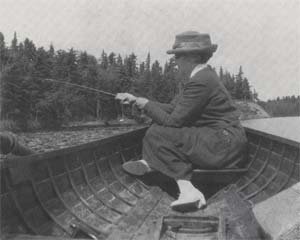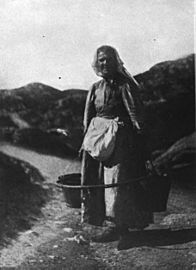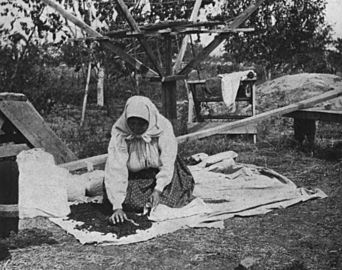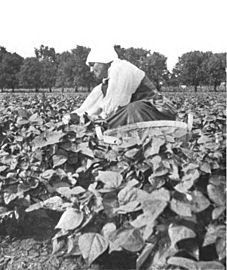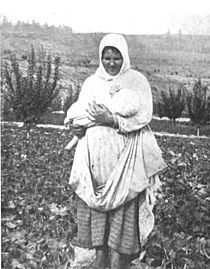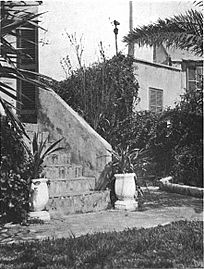Edith Watson facts for kids
Quick facts for kids
Edith Sara Watson
|
|
|---|---|
 |
|
| Born | November 5, 1861 |
Edith Sara Watson (born in East Windsor Hill, Connecticut in 1861 – died in Florida in 1943) was a famous photographer. Her career lasted from the 1890s to the 1930s. She is best known for her pictures of everyday life, working people, and women. Many of her most famous photos were taken in Canada.
Contents
Early Life and Art
Edith Watson was the youngest of four children. Her family worked in the newspaper business. They also farmed tobacco. Edith and her sister, Amelia Watson, both loved watercolor painting. They even built their own art studio. For about ten years, they traveled around New England. They showed and sold their artwork.
In the 1890s, Edith started trying out photography. She learned about cameras from her uncle, Sereno Watson, who was a botanist.
Adventures in Photography
In 1896, Edith Watson visited Canada for the first time. For the next 35 years, she spent much of her time there. She photographed people living in the countryside, especially women. Edith sold her pictures to newspapers and magazines in North America. Sometimes, she traded her photos for a place to stay or for supplies. This helped her to be independent. She supported herself as an artist and a traveler.
For many years, Edith spent winters in Bermuda. She rented a small house in St. George's, Bermuda. There, she sold her watercolor paintings and hand-colored photographs. In 1911, in Bermuda, Edith met Victoria "Queenie" Hayward. Victoria was a journalist. The two women became close collaborators. They lived, worked, and traveled together. They explored many isolated parts of Canada.
Edith used her camera to show the lives of people in many Canadian regions. These included Newfoundland, Labrador, the Maritimes, Quebec, Ontario, Manitoba, and British Columbia. While Edith took the pictures, Victoria wrote about their journeys. They stayed with First Nations people in Quebec and Ontario. They also visited Mennonites, Doukhobors, and other new Canadians in Manitoba. In British Columbia, they stayed with the Haida people.
In 1922, Edith Watson and Victoria Hayward published a book called Romantic Canada. It was a travel book with many pictures. In the book, Victoria Hayward used the phrase "the Canadian mosaic." This phrase described Canada's many different cultures. Later, other writers and artists used this idea too.
Pictures of Canadian Women
Pictures of Bermuda
See also
 In Spanish: Edith Watson para niños
In Spanish: Edith Watson para niños


